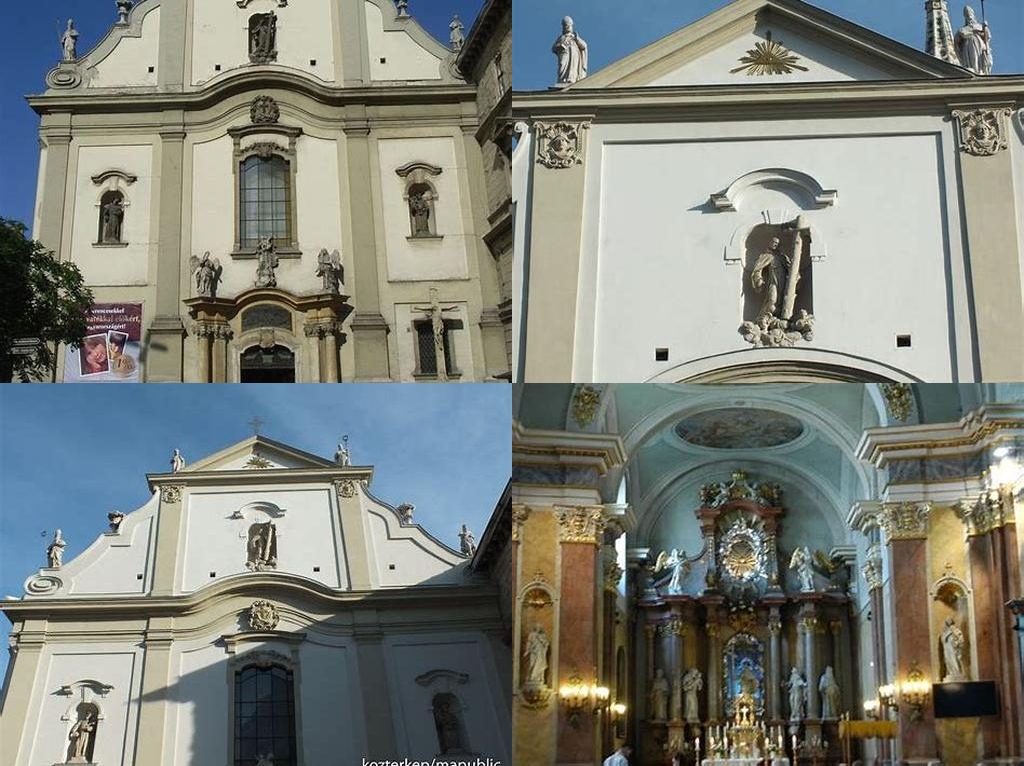
Alcantarai Szent Péter-templom (Church of Saint Peter of Alcántara) stands quietly yet gracefully in a scenic part of Budapest, inviting anyone with an appreciation for hidden gems and stories that travel through the corridors of time. Walking up to the building, it’s impossible not to pause and take in the mellow, almost soft exterior that contrasts with some of the city’s more dramatic churches. The modesty of its façade gives little away about the lively history and the tranquility that fills the space, and that surprise is part of the charm that keeps visitors coming back.
The church takes its name from Saint Peter of Alcántara, a Spanish friar from the 16th century revered for his humility, kindness, and, some would say, extraordinary resilience. The building itself, though, hails from slightly later—its foundation stone was laid in 1737, a subtle nod to the complexity of Hungarian religious and architectural history. The structure was brought to life under the guidance of the Franciscan order, whose members often took to heart the spirit of simplicity and spiritual depth, building not merely structures, but sanctuaries for the soul.
Step inside, and you’re enveloped by a gentle, golden light filtering through crisscrossed beams and the high, arched ceiling, punctuated with flourishes of delicate baroque ornamentation. What sets Alcantarai Szent Péter-templom apart from many other historic churches is the way it manages to be both ornate and calm at the same time. The main altar, dedicated to its namesake, features detailed woodwork and art that speak quietly yet powerfully about the aspirations of a community to honor a man who embodied selflessness. Timeworn benches contribute to a muted atmosphere, and the faint scent of beeswax and ancient wood lingers in the air, reinforcing the sense of peace. Here, you’ll find fewer tourists than at St. Stephen’s Basilica or Matthias Church, making it a restful spot to reflect or simply enjoy the beauty of things crafted to last.
One of the fascinating details about this church is its resilience. Over the centuries, Alcantarai Szent Péter-templom has stood stoically through the city’s shifting fortunes—wars, political change, and cultural metamorphoses. In 1786, during the wave of suppressions affecting monastic orders throughout the Habsburg Empire, the church underwent periods of transformation, yet it always returned to its Franciscan roots. European history fans will be intrigued by how its walls hold the echoes of different eras, including moments when the building played a supporting role in the shifting landscape of Hungary’s religious communities.
Local legend has it that some of Budapest’s most beloved poets and writers dropped by for quiet contemplation, close to the twisty, leafy streets that surround the church. Walk outside and you’ll find yourself surrounded by traces of everyday history—lively neighborhood cafés, winding alleys, and residents who view the church as part of their own daily rhythm. That’s perhaps the greatest appeal: visiting this church feels less like checking a box and more like sharing a genuine slice of local life, far from the well-worn tourist routes.
In a city famous for its architectural bravado, Alcantarai Szent Péter-templom offers something quite different: a soft-spoken elegance rooted in centuries-old tradition, warm community ties, and a peacefulness that quietly renews anyone who steps inside. Whether you’re drawn by spiritual curiosity, historical interest, or the simple desire for a tranquil moment amid your explorations of Budapest, this church reveals itself gently—one detail, one story, one breath of peace at a time.





